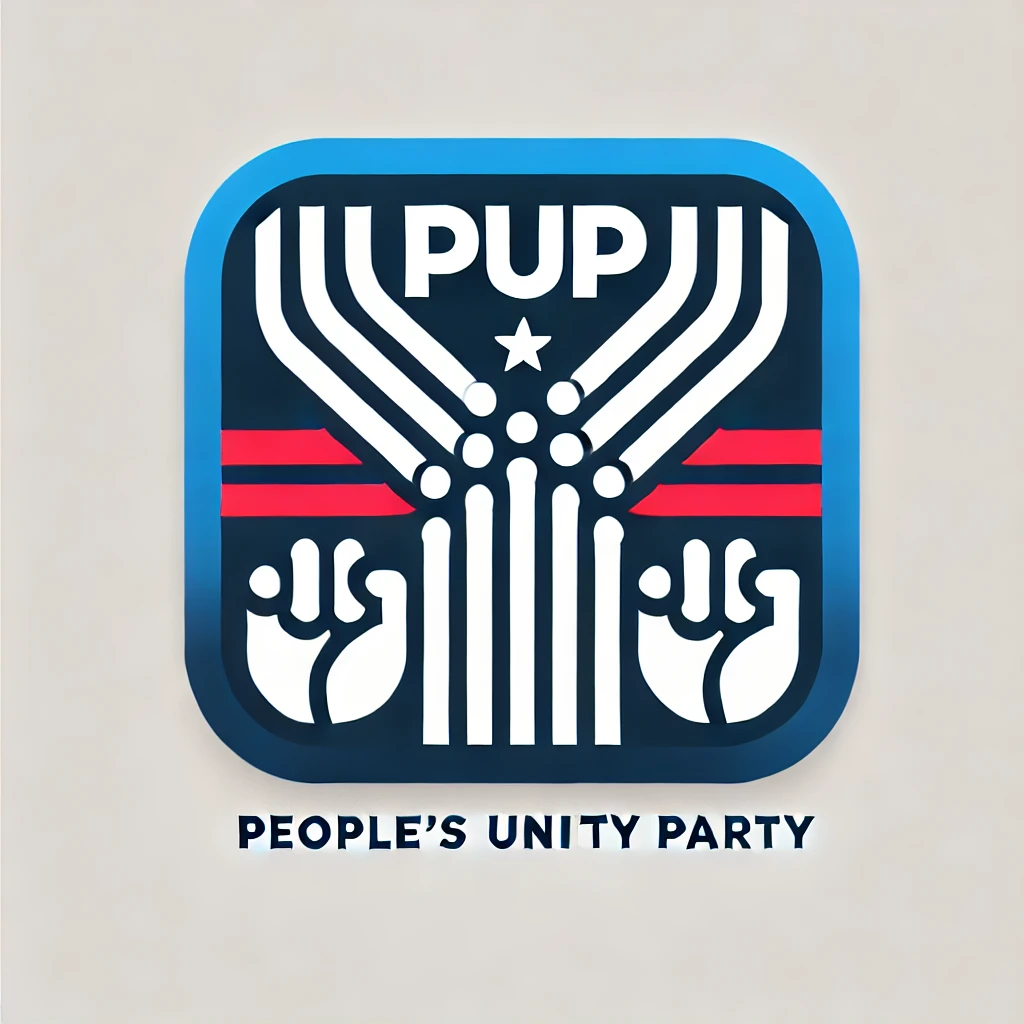


The People’s Unity Party (PUP)
The People’s Unity Party (PUP) is an independent movement focused on empowering hard-working middle-class Americans who have been overlooked by both major political parties. While starting as a wing of the Democratic Party due to its pro-worker stance, PUP remains independent in its mission to create policies that support unions, affordable education, fair wages, and transparency in government.
Powered by

The Affordable Housing and Homeownership Protection Policy for [County Name]
Section 1: Title
This policy shall be known as the “Affordable Housing and Homeownership Protection Policy for [County Name].”
Section 2: Purpose
To make housing more affordable and accessible for residents of [County Name] by increasing the supply of affordable housing, limiting corporate ownership of residential properties, stabilizing rental markets, and addressing homelessness.
Section 3: Definitions
1. Affordable Housing:
Housing units priced to ensure individuals earning up to 80% of the area median income (AMI) spend no more than 30% of their income on housing costs.
2. Corporate Purchases:
Residential property purchases made by corporations, investment firms, or entities owning more than 15 residential properties in [County Name].
3. First-Time Homebuyer:
An individual or family who has not owned a home in the past three years.
4. Vacant Property:
A residential property unoccupied for more than six consecutive months, excluding properties under active rehabilitation or listed for sale.
Section 4: Increasing Affordable Housing Supply
1. Incentives for Affordable Housing Development:
• Provide property tax abatements for developers building affordable housing units in [County Name].
• Require 15% of units in any new residential development receiving county subsidies to be designated as affordable housing.
2. Rehabilitation of Vacant Properties:
• Allocate $25 million from the county budget to rehabilitate vacant and abandoned homes for affordable housing.
• Partner with local non-profits to prioritize sales or rentals to low-income families, veterans, and first-time homebuyers.
3. Zoning Reforms:
• Work with municipalities to amend zoning codes, allowing for higher-density housing in appropriate areas to increase affordable housing availability.
Section 5: Limiting Corporate Purchases of Residential Homes
1. Corporate Purchase Cap:
• Limit corporations to purchasing no more than 5% of single-family homes listed for sale in [County Name] annually.
2. Priority for Individual Buyers:
• Mandate a 45-day listing period during which only individuals, families, or non-profits may submit offers for residential properties.
3. Enforcement and Penalties:
• Impose a 10% surcharge on the sale price of properties purchased by corporations exceeding the cap, with revenues directed to the Affordable Housing Fund.
Section 6: Making Homeownership More Accessible
1. County-Level Down Payment Assistance:
• Create a $15 million fund to provide grants of up to $10,000 for first-time homebuyers earning less than 120% of AMI.
2. Property Tax Relief:
• Cap annual property tax increases at 3% for owner-occupied homes valued below the county median price.
3. Educational Support:
• Establish mandatory homeownership education programs for grant recipients to ensure financial literacy and long-term housing stability.
Section 7: Stabilizing the Rental Market
1. Rent Control Ordinance:
• Cap annual rent increases for properties in [County Name] at the lesser of 5% or the local inflation rate.
• Exempt properties built within the last 15 years to encourage new development.
2. Tenant Protections:
• Ban no-cause evictions and require landlords to give a minimum 60-day notice for lease terminations.
• Allocate $2 million for legal aid services to support tenants facing eviction.
Section 8: Addressing Homelessness
1. Housing First Program:
• Dedicate $10 million annually to fund permanent supportive housing for homeless individuals and families.
• Partner with local non-profits to integrate mental health and employment services with housing initiatives.
2. Emergency Housing Fund:
• Create a $5 million fund for temporary shelters and transitional housing, with priority given to families with children and veterans.
Section 9: Funding Sources
1. Vacant Property Tax:
• Levy a 1% annual tax on residential properties left vacant for more than six months. Estimated revenue: $5 million annually.
2. Luxury Property Surcharge:
• Impose a 1% surcharge on residential properties sold for more than $2 million. Estimated revenue: $10 million annually.
3. Corporate Purchase Surcharge:
• Collect a 10% surcharge on properties purchased by corporations exceeding the cap. Estimated revenue: $3 million annually.
4. County Budget Allocation:
• Redirect $10 million annually from underutilized housing programs to fund affordable housing initiatives.
Section 10: Reporting and Transparency
1. Annual Report:
• The [County Housing Authority] shall submit an annual report to the County Legislature detailing the progress of affordable housing programs, corporate purchase compliance, and homelessness reduction.
2. Public Dashboard:
• Create an online dashboard to provide residents with real-time updates on housing program metrics, including available affordable units and homelessness statistics.
Section 11: Implementation Timeline
This policy shall take effect on January 1, [Year], with full implementation by December 31, [Year+1].
Section 12: Severability
If any provision of this policy is found to be unconstitutional or invalid, the remaining provisions shall remain in effect.
Conclusion
The Affordable Housing and Homeownership Protection Policy for [County Name] is designed to address the housing crisis at the local level by expanding affordable housing, limiting corporate dominance in the residential market, stabilizing rents, and reducing homelessness. By prioritizing residents over profits, this policy ensures that housing remains accessible and equitable for all.
Related Blogs
View All





